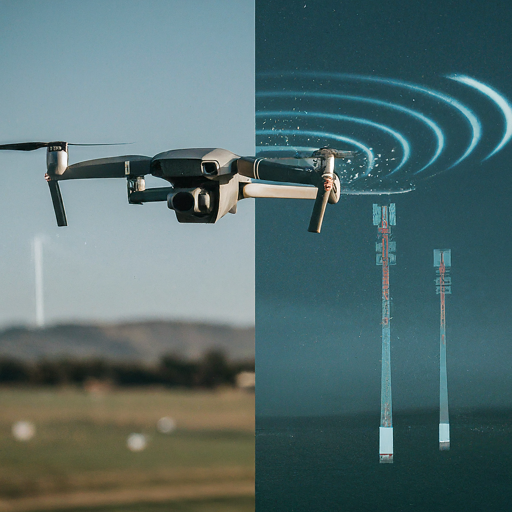Remote ID is here, and it's the new digital license plate for your drone. But like many evolving technologies, there isn't a single, one-size-fits-all way to do it. Enter the two primary methods of Remote ID compliance: Broadcast and Network. Understanding the pros and cons of each is crucial for responsible drone piloting.
Broadcast Remote ID: The Self-Sufficient Approach
- The Basics: Think of it like your drone constantly shouting out its own signal. A Remote ID Broadcast module attached to your drone transmits its identification, location, altitude, speed, and other vital data directly over radio frequencies.
- Pros:
- Independence: You fly, your drone broadcasts – no need for internet connectivity. Ideal for remote areas.
- Broad Reach: Any compatible receiver within range can pick up your drone's signal.
- Lower Latency: Data transmission is nearly instantaneous, great for real-time safety applications.
- Cons:
- Potential Congestion: In crowded areas, many drones broadcasting can create 'signal noise'.
- Weight and Cost: Adding a module to your drone is an extra consideration.
- Limited Data: Broadcast focuses on core identification – it may not support advanced features some network solutions offer.
Network Remote ID: The Connected Method
- The Basics: Your drone connects to a FAA-approved Remote ID service provider – think of them as air traffic controllers for drones. Your flight information is relayed through them, using your internet connection.
- Pros:
- No Extra Gear (Usually): No modules needed, especially if your drone has network capabilities built-in.
- Centralized Management: Authorities have a comprehensive view of drone traffic.
- Potential for Extras: Network systems may offer flight planning tools, airspace awareness features, and more.
- Cons:
- Reliance on Connectivity: No cellular or Wi-Fi signal, no Remote ID via network methods.
- Coverage Concerns: Works best in areas supported by the service provider's network.
- Possible Subscription Fees: Some providers may offer their services as a subscription model.
When to Choose Which
Here's a quick decision guide:
- Remote Exploration: If you fly in areas with spotty connectivity, Broadcast offers reliable compliance.
- Drone-Heavy Zones: Network might be preferable in crowded urban environments to reduce signal overload.
- Simple vs. Feature-Rich: Broadcast is 'get it done' compliance, Network can unlock additional drone services.
- Budget: If you're cost-conscious and your drone is lightweight, Network may be a leaner option.
The Future: A Hybrid Approach?
It's important to note that Remote ID is a growing technology. It's quite possible that future drones could have both Broadcast and Network capabilities built-in, offering the best of both worlds in different scenarios.
The Key Takeaway
There's no single "winner" in the Broadcast vs. Network debate. The best choice for you depends entirely on how you fly, where you fly, and your individual needs as a drone pilot. Understanding the nuances of each system ensures you make an informed decision and fly with both safety and compliance in mind.
Let's Discuss: Which Remote ID method do you prefer and why? Share your experiences in the comments!
